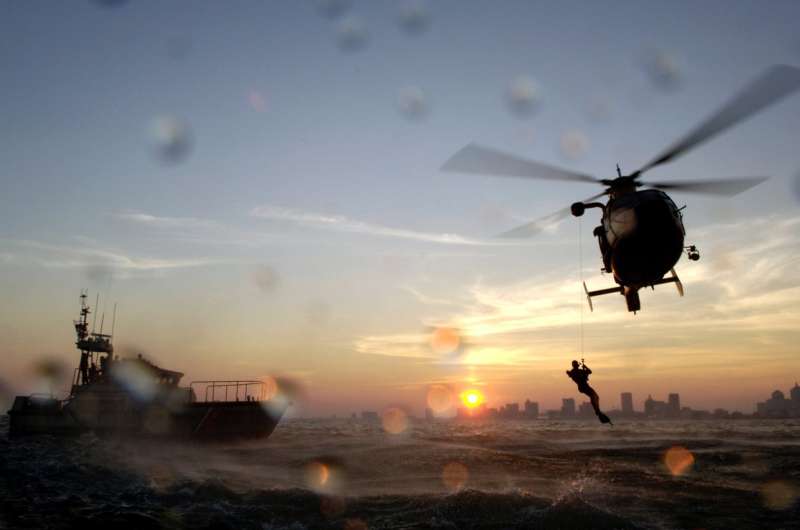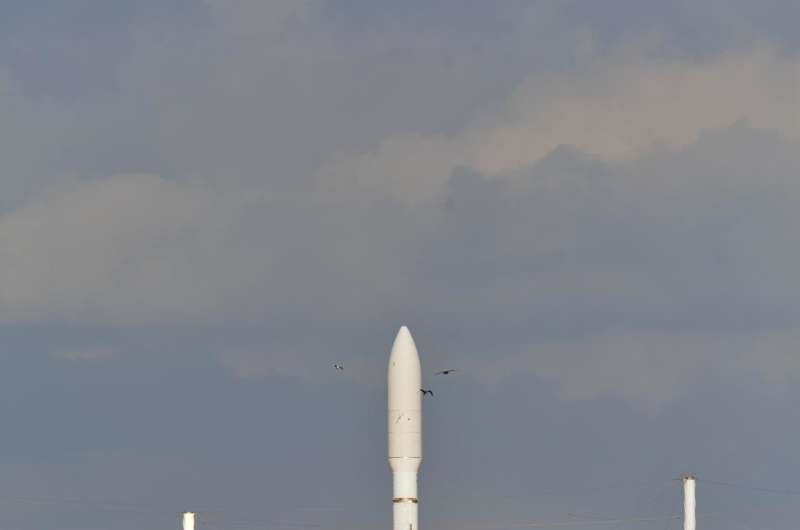Weather satellites aid search and rescue capabilities

The same satellites that identify severe weather can help save you from it.
The National Oceanic and Atmospheric Administration's (NOAA's) Geostationary Operational Environmental Satellite (GOES) constellation monitors Earth's environment, helping meteorologists observe and predict the weather. GOES observations have tracked thunderstorms, tornadoes, hurricanes and flash floods. They've even proven useful in monitoring dust storms, forest fires and volcanic activity.
The recently launched GOES-S (planned to replace the current GOES-West later this year) and other GOES series satellites carry a payload supported by NASA's Search and Rescue (SAR) office, which researches and develops technologies to help first responders locate people in distress worldwide, whether from a plane crash, a boating accident or other emergencies.
Over its history, the SAR office at NASA's Goddard Space Flight Center in Greenbelt, Maryland, has developed emergency beacons for personal, nautical and aeronautical use, along with ground station receivers that detect beacon activation. Space segment SAR instruments fly on many spacecraft in various orbits around the Earth. The GOES SAR transponders are geostationary, meaning that they appear "fixed" relative to a user on the surface due to their location over the equator and orbital period of 24 hours.

"The SAR space segment isn't just one instrument in one orbit," said Tony Foster, SAR's deputy mission manager. "Rather it's a series of instruments aboard diverse satellites in various orbits, each working together to provide first responders with highly accurate locations."
The GOES search and rescue transponders, unlike SAR instruments in other orbits, are only able to detect the beacon signals, not help to determine location. This detection rapidly alerts the global SAR network, Cospas-Sarsat, of a distress beacon's activation. This gives the system valuable time to prepare before the signal's origin can be determined by SAR instruments on low-Earth-orbiting satellites.
Additionally, beacons with integrated GPS technology can send their location data through GOES to the SAR network. The network can then alert local first responders to the location of the emergency without the aid of the low-Earth-orbiting constellation of search and rescue instruments.
NASA's SAR team provides on-orbit testing, support and maintenance of the search and rescue instrument on GOES. The GOES satellites and SAR instruments are funded by NOAA.
"We are proud to support the Cospas-Sarsat program by hosting a search and rescue transponder aboard our satellites," said Tim Walsh, GOES-R series program acting system program director. "SAR is one of the many NOAA-NASA collaborations that translate into life-saving technology."
In the future, first responders will rely on a new constellation of instruments on GPS and other Global Navigation Satellite Systems currently in medium-Earth orbit, an orbit that views larger swathes of the Earth than low-Earth orbit due to higher altitudes. These new instruments will enable the SAR network to locate a distress signal more quickly than the current system and calculate their position with accuracy an order of magnitude better, from one kilometer (0.6 miles) to approximately 100 meters (328 feet).
In the meantime, the SAR transponders aboard GOES cover the time between the activation of a distress signal and detection by SAR instruments in low-Earth orbit.
"NASA's SAR office dedicates itself to speed and accuracy," said Lisa Mazzuca, SAR mission manager. "The instruments and technologies we develop endeavor to alert first responders to a beacon's activation as soon as possible. The GOES search and rescue transponders are crucial to this goal, providing near-instantaneous detection in the fields of view of the Earth."
Provided by NASA's Goddard Space Flight Center



















